

Max Davies
4 Days Ago
The plug-in hybrid version of Peugeot's 508 Fastback feels like a flagship, but is it worth the $17,000 premium over the petrol-only version?
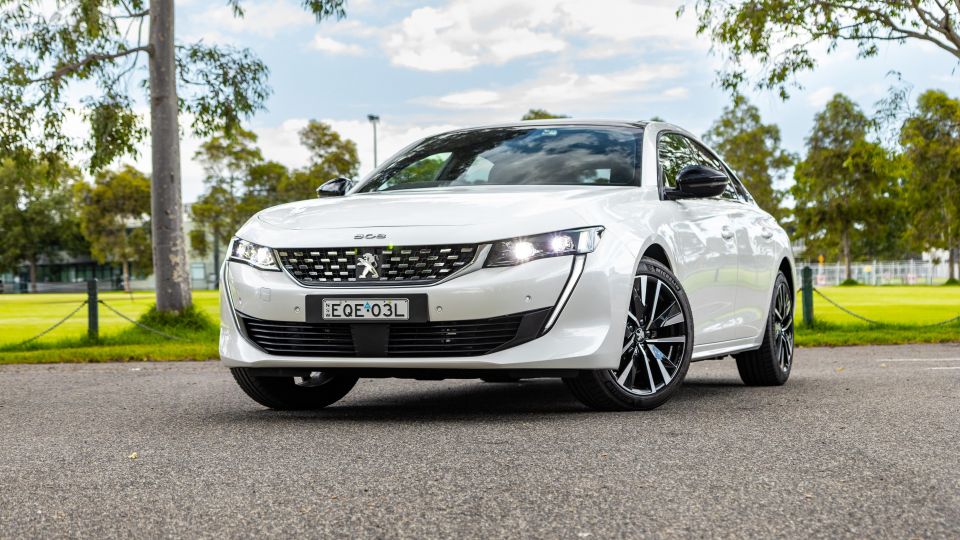
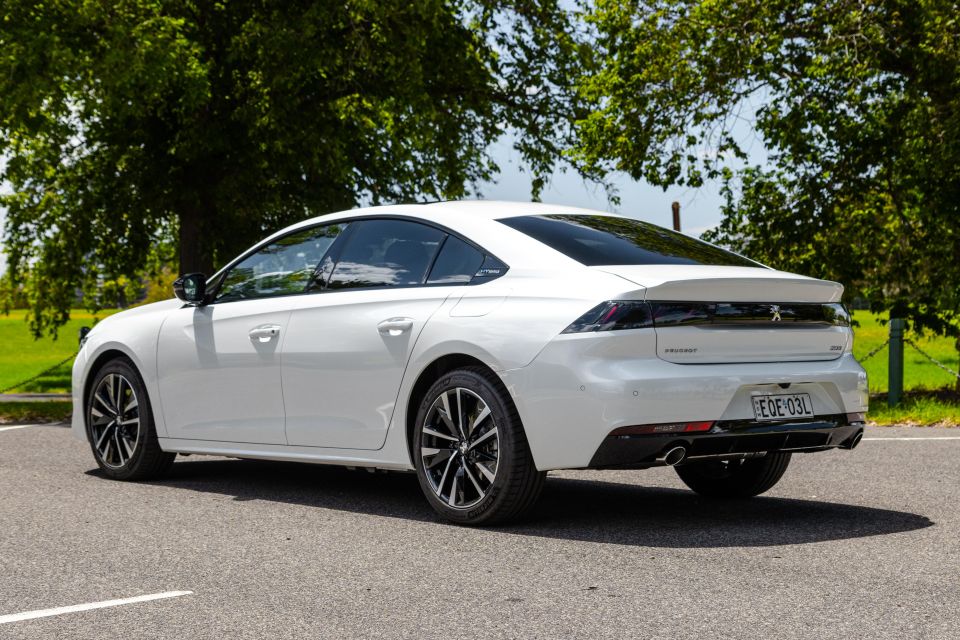

Quickly see how this car stacks up against its competition. Select any benchmark to see more details.
Take advantage of Australia's BIGGEST new car website to find a great deal on a Peugeot 508.
Hybrid and electric vehicle sales continue to boom in Australia, but plug-in hybrids (PHEVs) aren’t experiencing anywhere near the same growth.
Toyota has been driving hybrid sales with its top-selling RAV4, Corolla and Camry (amongst others) while Tesla and MG seem to be Australia’s go-to brands for battery electric vehicles – headlined by the Model 3 and ZS EV.
Unlike in Europe where government subsidies offset price premiums in the interest of reducing emissions, Australian buyers have to stump up the full difference for a plug-in hybrid with no financial incentive – in the case of Victoria, you get taxed for driving one.

That isn’t stopping carmakers from introducing more PHEVs. Most European manufacturers don’t do parallel hybrids like Toyota, instead going straight to PHEVs as a stepping stone into electrification (and a cheeky way to sneak under tight emissions caps). Example – the 2022 Peugeot 508 GT Fastback PHEV.
While it technically competes in the same VFACTS segment as the Toyota Camry, the plug-in hybrid 508 is pitched as something of a bridge between the mainstream and premium segments.
Peugeot, like Volkswagen, positions itself as a ‘premium for the people’ brand. Does this (very pretty) 508 PHEV deserve a look considering it’s costs a lot more to purchase than its turbo petrol counterpart?
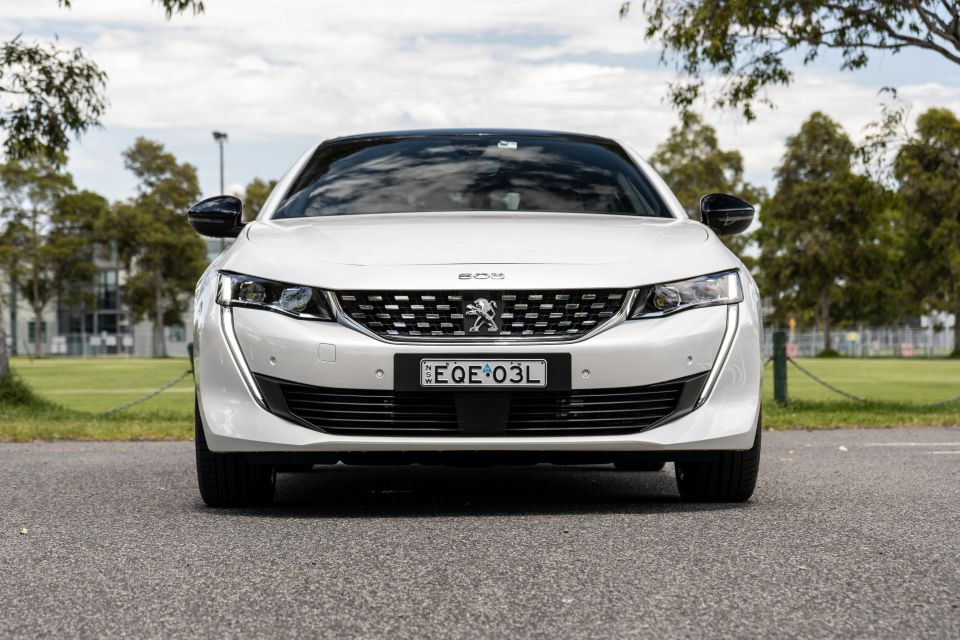
Pricing for the plug-in 508 starts at $76,990 plus on-road costs – nearly $17,000 more than the petrol-only 508 GT Fastback (from $59,840).
That’s despite standard specification being largely identical to its non-hybrid sibling, and puts the 508 PHEV firmly in premium medium sedan territory.
With that said, no mainstream-branded rival offers a plug-in hybrid powertrain locally, and premium alternatives with petrol-electric power are more expensive. The standard 508 GT occupies a similar position.
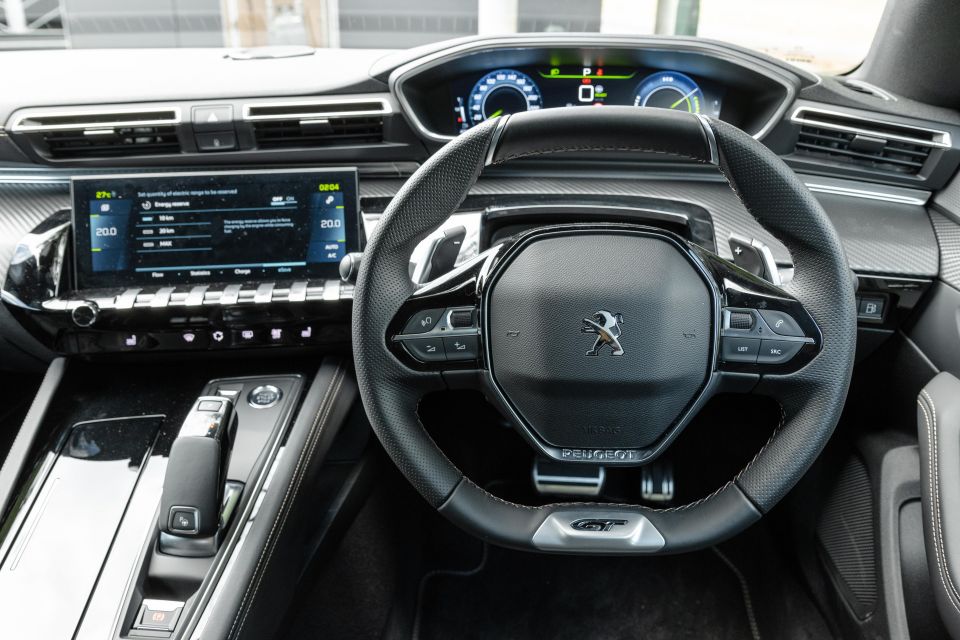
Key rivals include:
All prices exclude on-road costs unless specified
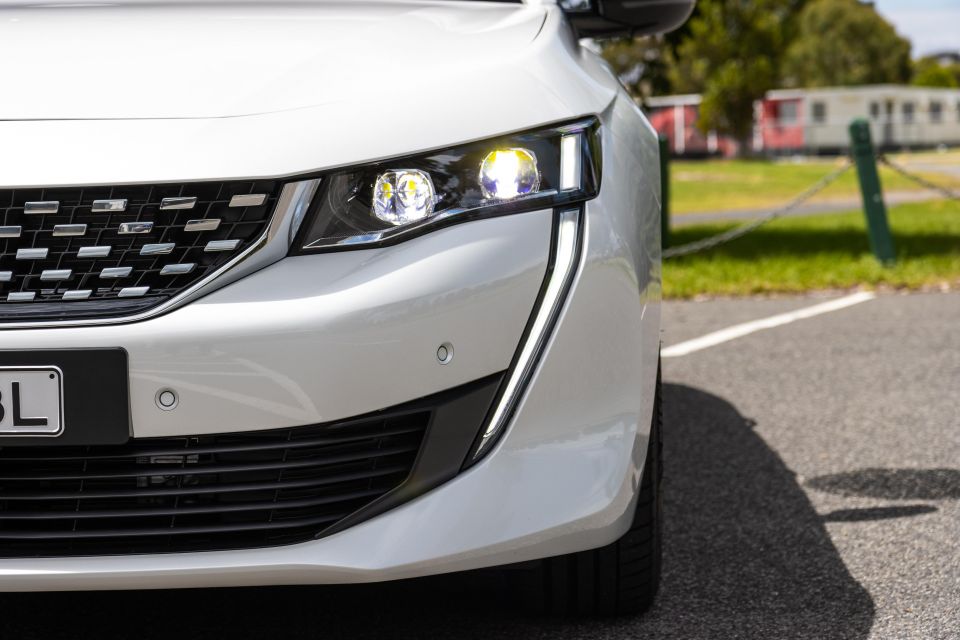

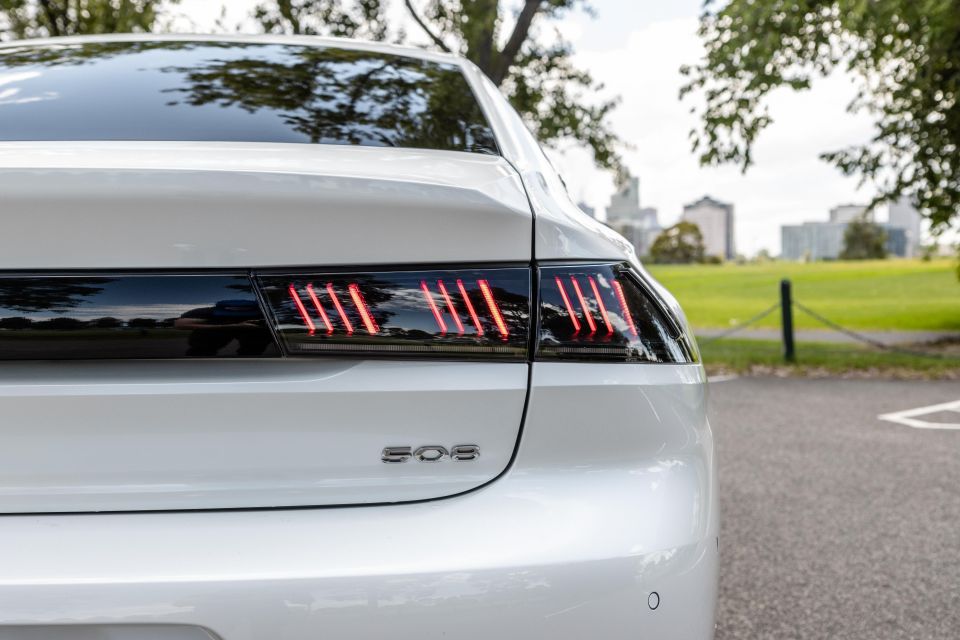
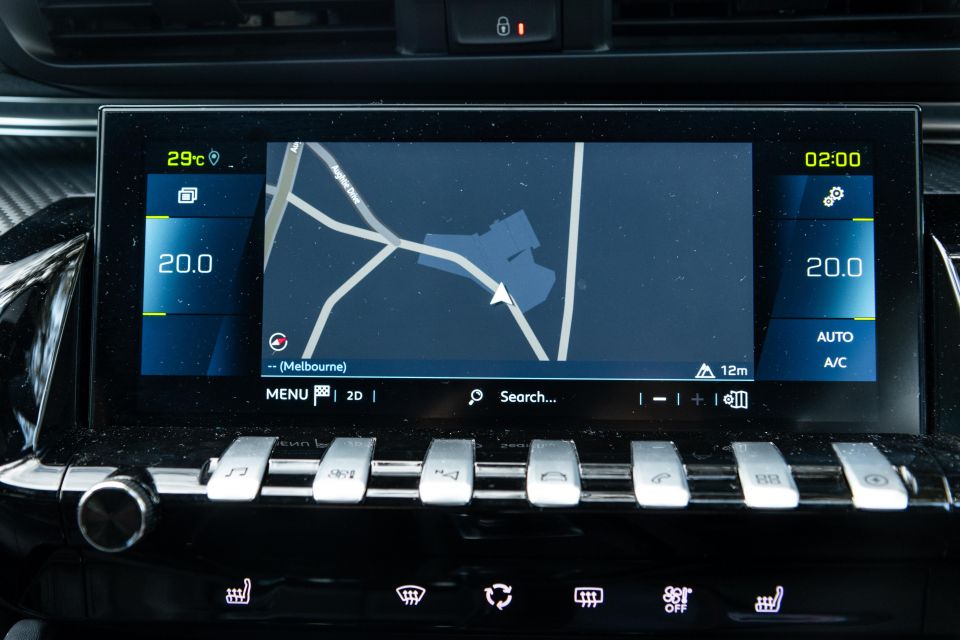
Specification highlights:
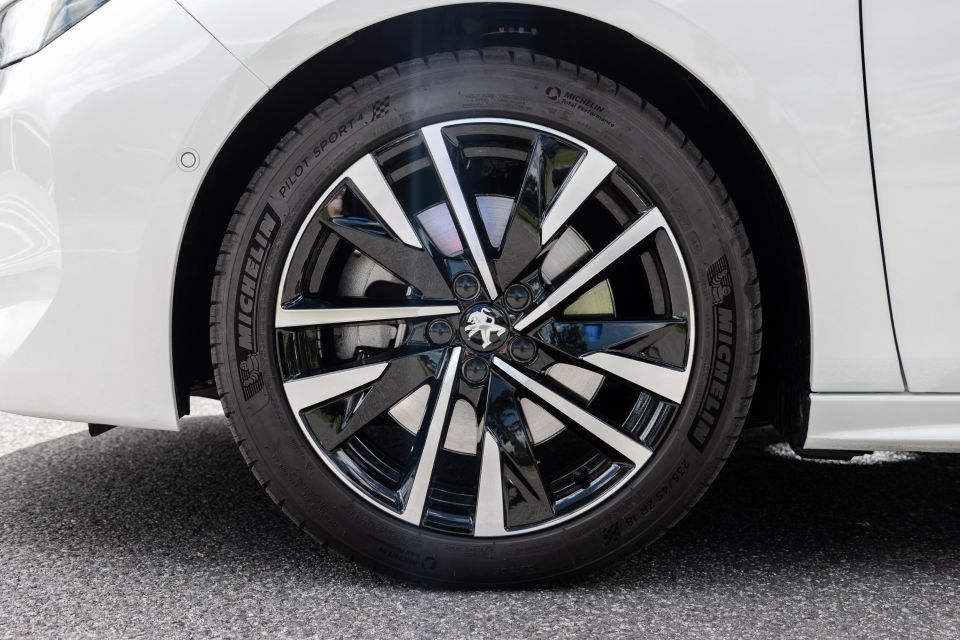
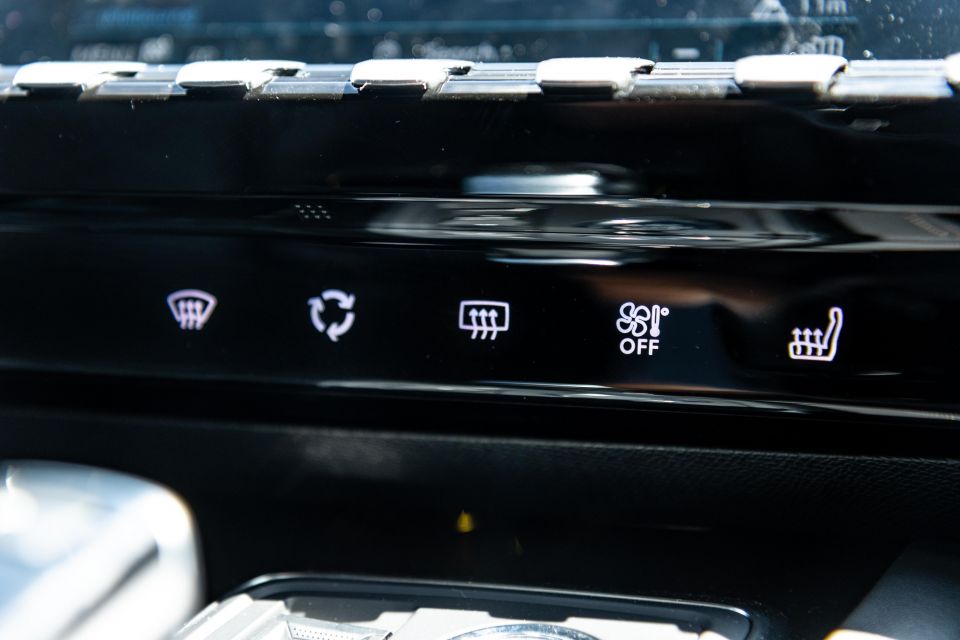
The 508 GT Plug-in Hybrid essentially carries over the specification of the 508 GT turbo petrol-only version.
However, the PHEV gets smaller 18-inch alloys (instead of 19s), and the i-Cockpit displays offer hybrid-specific menus and displays.
There’s also added drive modes including Hybrid and Electric, allowing drivers to toggle how they want the drivetrain to prioritise power sources.
You’re not left wanting for much, and premium-badged competitors require a few options boxes being ticked in order to match the Peugeot’s level of standard specification.
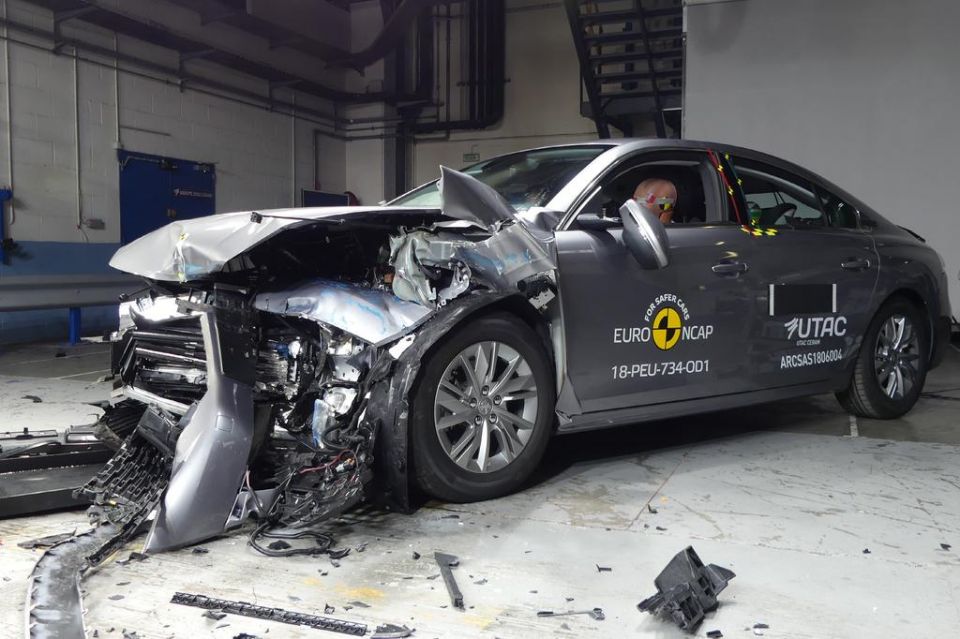
The Peugeot 508 wears a five-star ANCAP safety rating in GT guise, applying to both Fastback and Sportwagon body styles, based on tests conducted by Euro NCAP in 2018.
While the Euro NCAP rating applies to plug-in hybrid versions of both the Fastback and Sportwagon overseas, ANCAP’s rating hasn’t been updated to include the 508 GT Fastback PHEV just yet.
Regardless, the 508 scored 96 per cent for adult occupant protection, 87 per cent for child occupant protection, 71 per cent for vulnerable road user protection and 76 per cent for safety assist.
Standard safety features include:

Peugeot has really stepped up its interior presentation. Even if the layout and ergonomics are a bit quirky, you can’t deny the perception of quality and attention to detail.
Having recently driven the smaller 2008, which feels built to a price in places but presents well, the 508’s interior really could be mistaken for a vehicle much more expensive.
Grained, quilted nappa leather adorns the seats and there’s a high ratio of soft-touch materials used in the upper and mid-tier sections of the cabin. Everything you are likely to touch or rest a limb on is padded and/or leather-lined
I particularly loved the front seats with electric adjustment and multi-mode massage functions. It’s something you don’t see much of at this end of the market – I loved the cat paw one in particular. Another function on the front seats I love is the extendable under-thigh cushion.

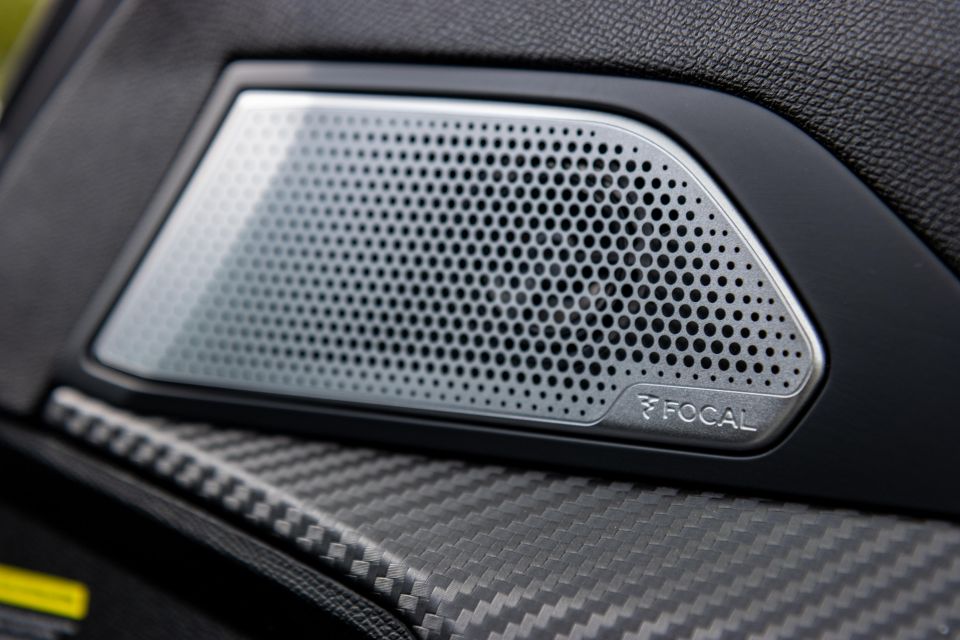
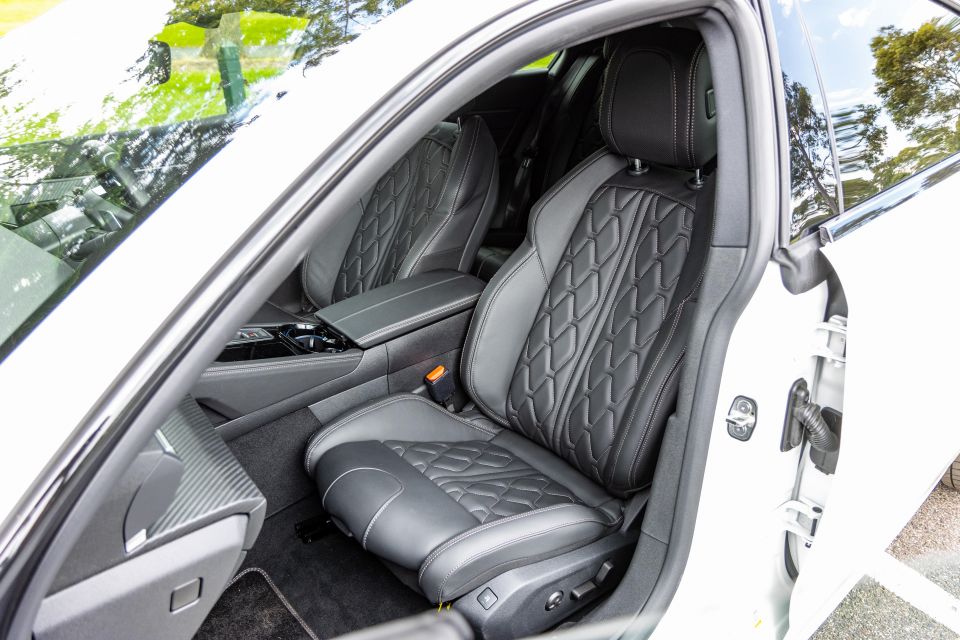
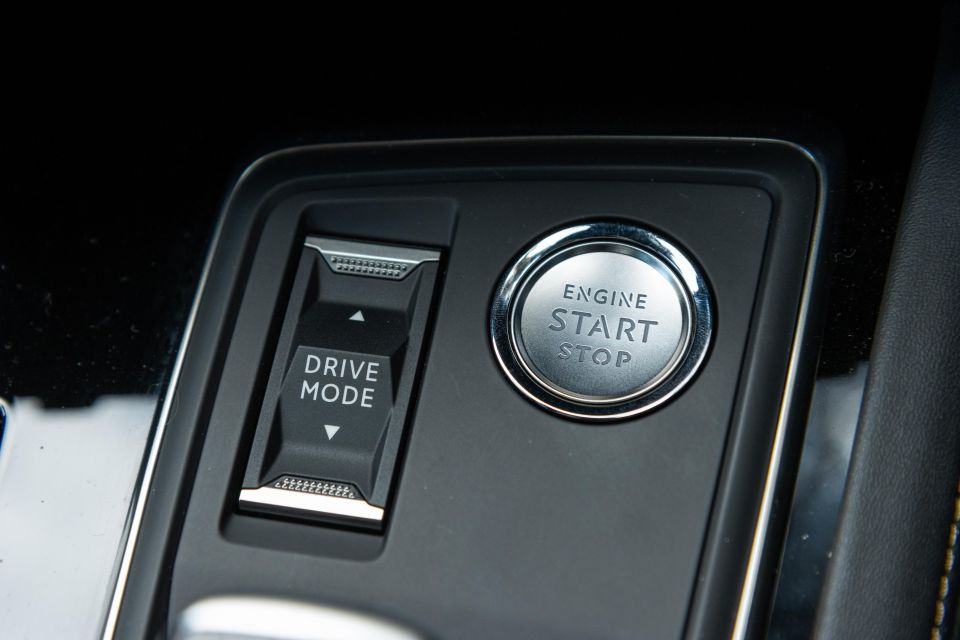
Now I know some of my colleagues loathe Peugeot’s funky small steering wheel and high-seat digital dials (cough Paul) but it works for me.
The whole concept is that you keep the video game-like steering wheel low, almost in your lap, and view the instrumentation above the top of the rim. I can make it work, but I know it’s not necessarily friendly to all shapes and sizes.
Some of the ergonomics are a little iffy, too. The steering wheel controls can take some getting used to, as some things either are in different spots to other manufacturers or the direction of the click wheel to skip songs goes opposite to what you might expect.
For example, I went to change songs numerous times and ended up flicking the wrong wheel roller and changing the instrument layout instead. The skip function also goes up for next rather than down like you’ll find in most Korean brands.


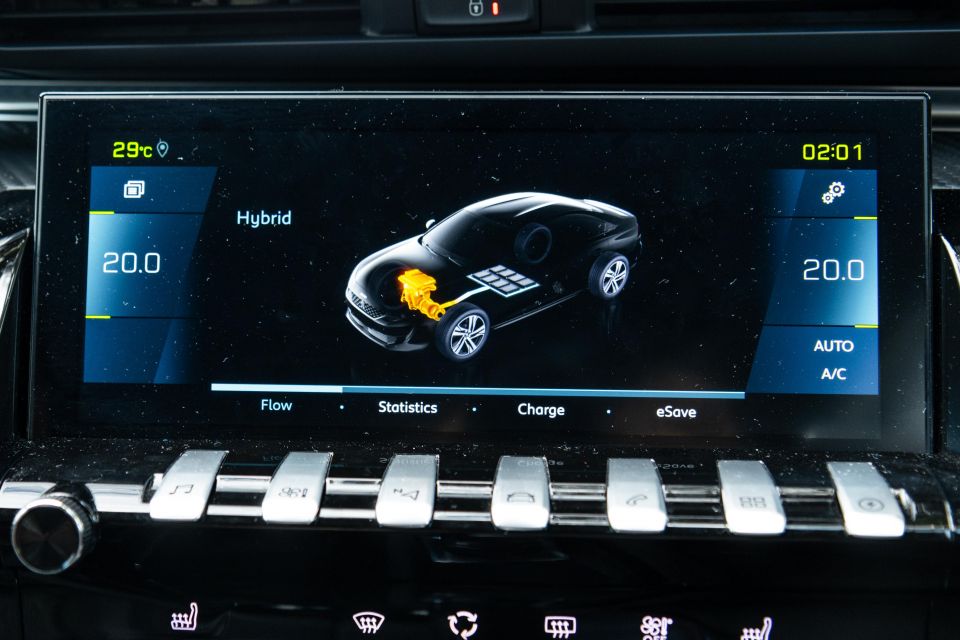
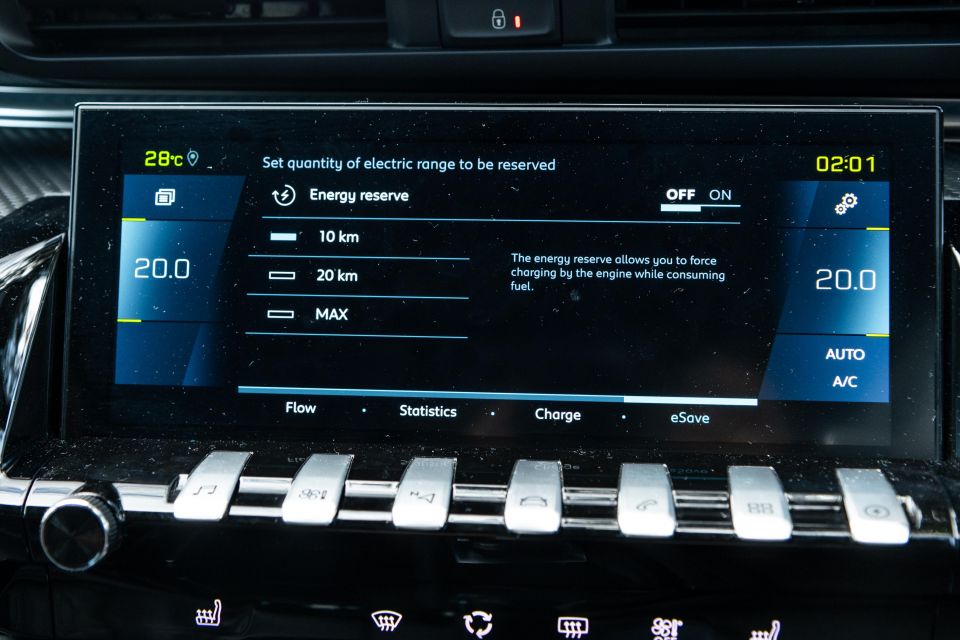
It’s a similar story with the infotainment system. This is probably the part of the cockpit where the 508 feels most behind its rivals.
Peugeot was one of the first manufacturers to shift climate controls into the touchscreen, and it is still frustrating to use. It’s made even more frustrating by the fact the display can be quite slow to respond and in some cases, completely unresponsive.
Simple tasks like changing temperature or fan speed mean leaving the navigation or Apple CarPlay displays and diving through the ventilation menus. It’s hardly intuitive, and quite frustrating.
Then there’s the native interface, which as we’ve found in previous Peugeot-Citroen reviews is a little behind the pack.
Load times, as mentioned earlier, are usually quite lethargic, and the buffering-like animation experience between menus when the system is struggling makes it feel a generation old. Thankfully, the Focal sound system is good once you adjust the levels, with crisp sound quality and the ability to dial in some thumping bass.
Storage up front is decent with two small cupholders under a folding draw, a deep storage cubby under the folding front-centre armrest lid, and pretty chunky door bins that can accommodate large bottles.
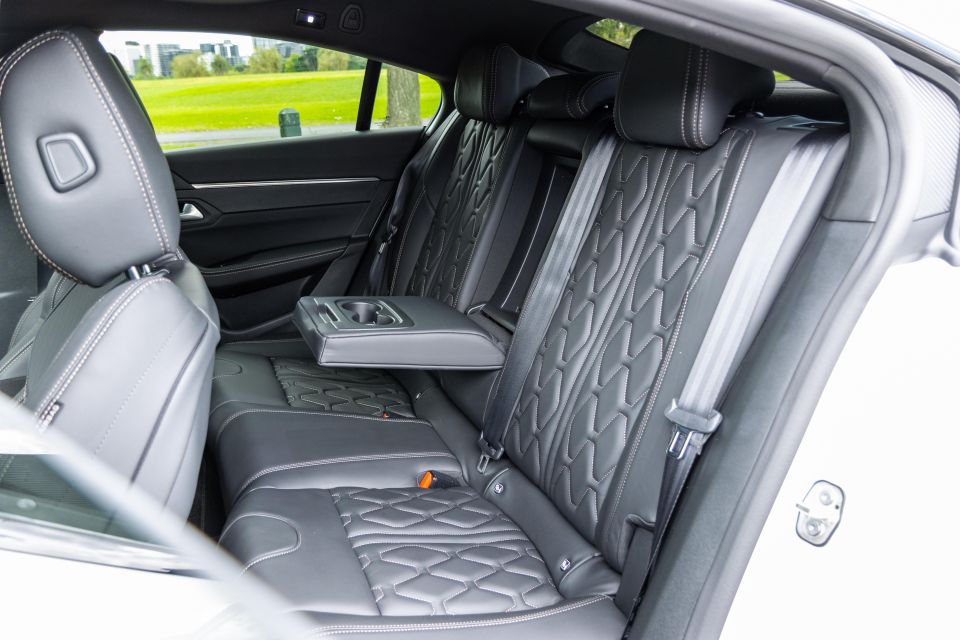
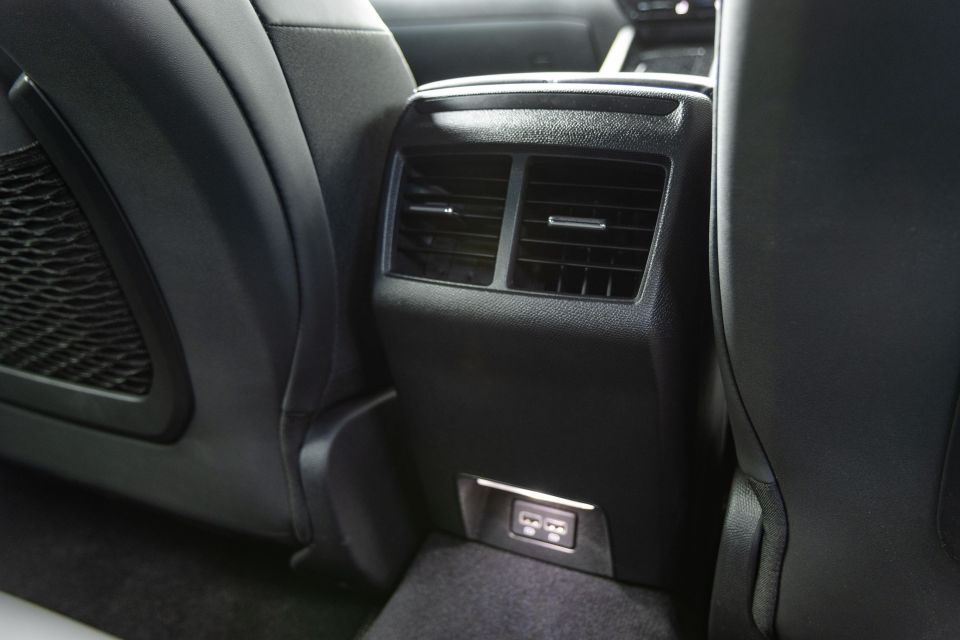
The rear seat isn’t as spacious as you might expect from a vehicle this large.
Legroom is okay for 6’1-ish me behind my own driving position, though knee room is a little tight. Even tighter is headroom, with the sloping fastback roofline really eating into headroom.
I had friends that are shorter than me complain their heads were brushing the headliner as well, so that’s something to note if you have tall mates or kids riding in the second row often.
There’s also a high transmission tunnel which just makes sitting in the middle even more uncomfortable.
Despite the tight space, rear-seat amenities include map pocket nets behind both front seats, directional rear air vents and USB-A charging ports behind the centre tunnel.
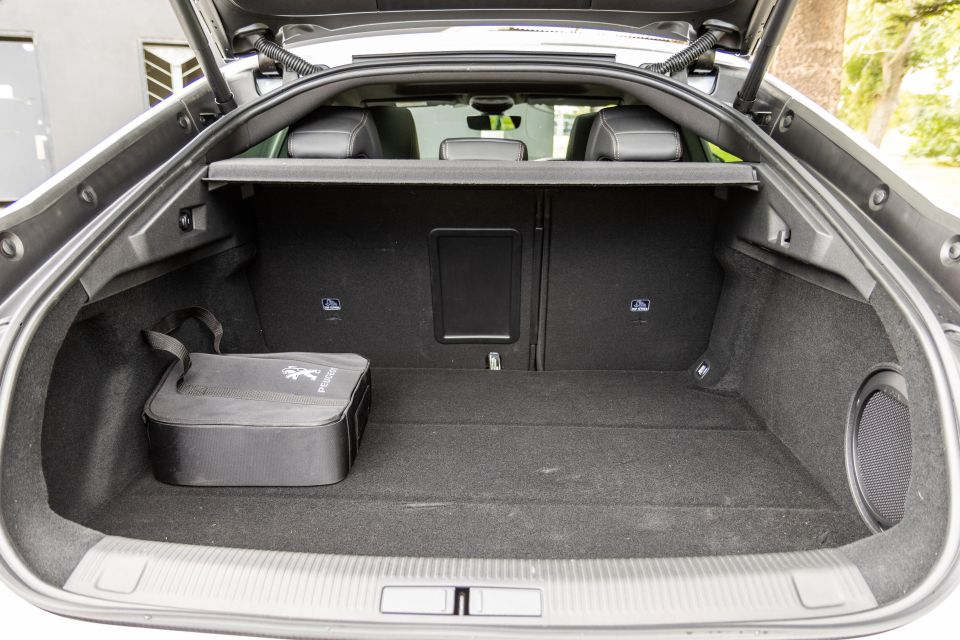
Where most hybrids and plug-in hybrids suffer reduced luggage capacity due to the battery packs eating into the floor, the 508 GT Fastback Plug-in Hybrid quotes the same dimensions of its petrol equivalent.
That means a 487L capacity with the rear seats in use, expanding to a wagon-like 1537L with them folded.
While the battery doesn’t eat into luggage capacity, it does mean that there’s no spare be it full-size or space-saver. Instead, there’s a tyre repair kit to patch up punctures.
Petrol models (Fastback and Sportwagon) get a space-saver spare.
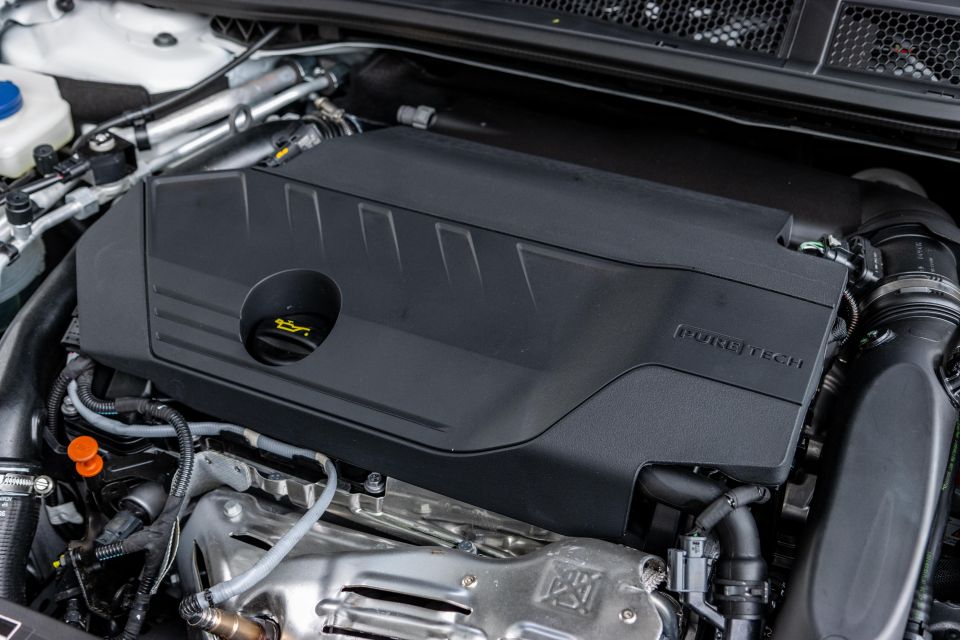
The 508 GT Fastback Plug-in Hybrid draws upon a 1.6-litre turbocharged petrol engine teamed with a 11.8kWh lithium-ion battery pack and an electric motor integrated into the eight-speed auto transmission.
On its own the turbo petrol engine develops 133kW (6000rpm) and 300Nm (3000rpm), while the e-motor contributes 81kW (2500rpm) and 320Nm (500-2500rpm). It’s front-wheel drive only.
Combined, the plug-in hybrid drivetrain quotes system outputs of 165kW (6000rpm) and 360Nm (2750rpm). By comparison, the standard 508 GT offers 165kW/300Nm from its higher output 1.6-litre turbo petrol engine.

Peugeot claims the 508 GT Fastback PHEV will use 1.8L/100km on the combined cycle and emit just 40.1g/km of CO2 – compared to the petrol’s claim of 6.3L/100km. The brand also claims the plug-in will drive up to 55km per charge according to European WLTP lab testing.
Zero to 100km/h takes a claimed 8.2 seconds in the PHEV, with top speed quoted as 250km/h (limited). That pretty much matches the petrol, which claims an 8.1-second 0-100 time and quotes a limited top speed of 250km/h.
Charging via a 2.3kW domestic socket takes approximately five hours from empty to 100 per cent.
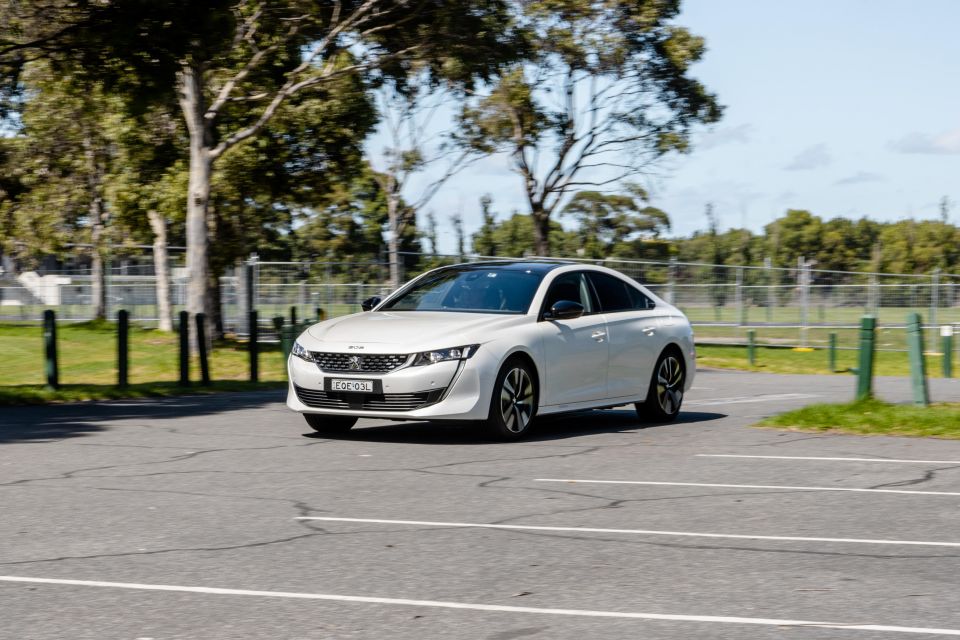
I wasn’t sure what to expect from the 508 PHEV, but I came away from my week of testing impressed.
Charging the battery every night meant I started each day with an indicated EV driving range between 40 and 45 kilometres.
While 81kW doesn’t sound like much, having 320Nm from the moment you press the accelerator in Electric mode means you can effortlessly glide along in the 508 PHEV without using any petrol unless you slam your foot on the throttle.
I managed to do most of my commuting with barely any petrol assistance. Flicking the drive mode into Hybrid, however, meant the 508 would decide when it was most efficient to use either or both power sources so you don’t deplete the battery too quickly.
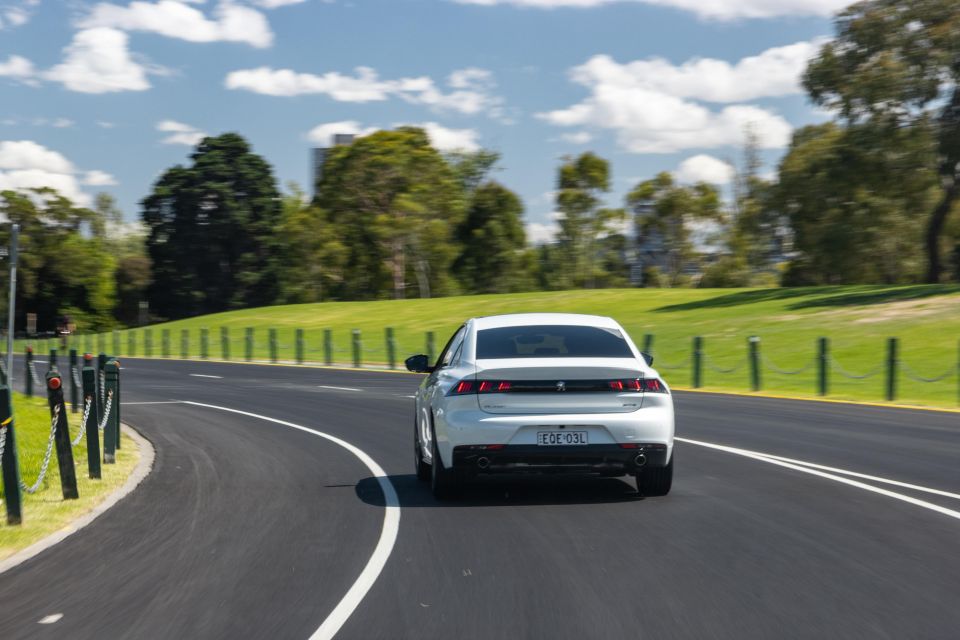
My route to the office is about 24km each way with a pretty significant portion of freeway, so with a full charge in the morning I could get to the office and about halfway home before the battery ran out. Leaving the Peugeot in Hybrid mode meant I’d save more battery power for the city rather than wasting it on the freeway.
When the turbo petrol engine does kick in, the shift in propulsion is impressively seamless. If you have trouble feeling when you’re in electric or hybrid modes, you can tell by the digital speedometer in the instrument cluster – blue numbers means you’re in zero-emissions mode, whereas white numerals indicate the petrol engine is running.
A few days I was unable to charge the Peugeot overnight. On these occasions I was either starting with zero battery or a very low level, so I played around with the e-SAVE battery modes to see if I could charge it efficiently. On a couple of freeway runs I’d select the charge mode to try and get 10km of range back by the time I hit the big smoke.
It managed to do it without sending the fuel consumption too high, but this is only really of benefit in markets where there are low-emissions zones – none of that is really a factor in Australia currently.
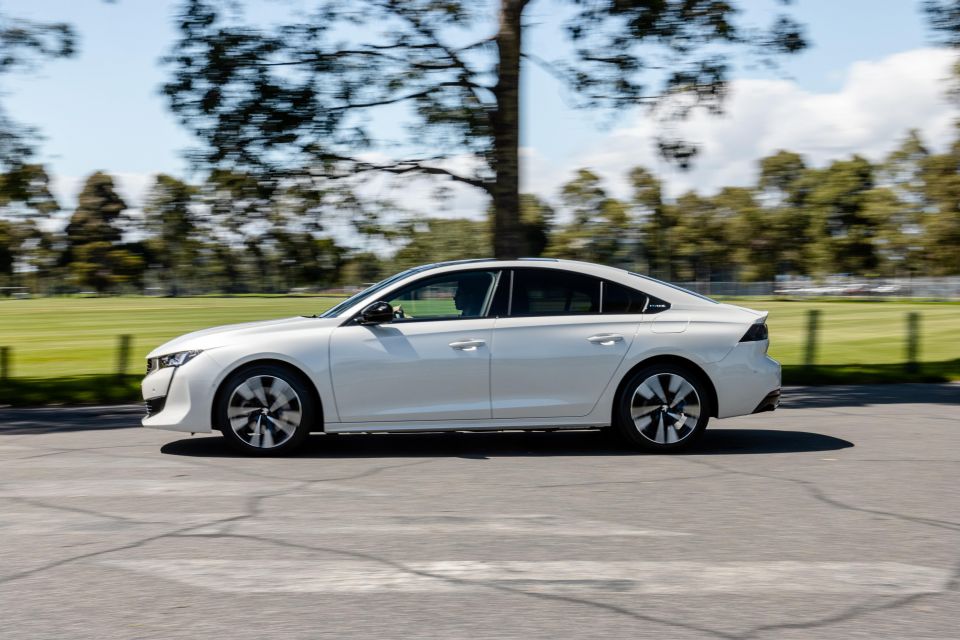
The Peugeot Hybrid system is able to drive at up to 130km/h on e-power, meaning even when left in Hybrid the 508 would slip into EV motoring on the highway. With excellent insulation from road and wind noise, the Pug is actually quite a capable, quiet and comfortable grand tourer – I guess GT is in the name after all.
It’s clearly designed for smooth acceleration and optimum efficiency, because flooring the throttle in any drive mode other than Sport is met with a moment or so delay as the driveline shuffles down a cog or two then fires up the petrol engine to give you maximum thrust.
With the petrol engine on the 508 hardly sets the world alight with its performance, but it does feel as quick as its 8.2-second 0-100 claim, which is pretty much the same as the non-hybrid 1.6-litre turbo petrol version.
The petrol engine itself isn’t intrusive though its gruff note under heavy load doesn’t seem fitting with the serenely refined cabin at speed. Best to drive this thing in a more sedate manner for the best experience and efficiency.
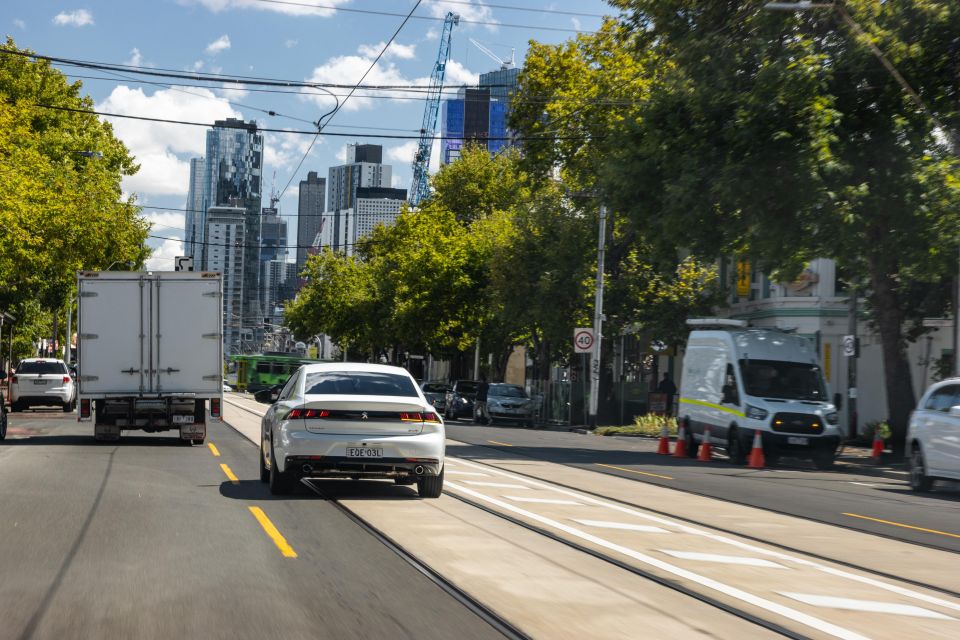
Weighing in at 1720kg (kerb), the 508 GT Fastback PHEV is carrying an extra 300kg over its petrol-only equivalent. This means it doesn’t quite have the pointy feel as the standard 508 GT, though in a straight line there’s an added layer of solidity and sure-footedness, particularly at high speeds.
With the power delivery characteristics mentioned earlier, the 508 PHEV isn’t meant to be a corner-carving sports sedan. Instead it’s meant to be an effortless and refined luxury cruiser.
You cannot defy the laws of physics, and even the plug-in hybrid BMW 330e lacks the sharpness of its petrol siblings, though it’s certainly more dynamic than the Peugeot. I’d argue the 508 is conversely more comfortable in most real-world driving scenarios, helped by light and fluid driver controls that make urban commuting easy.
The Peugeot’s suite of assistance systems work well too. Blind-spot monitoring is handy given the stylised roofline and thick C-pillars, while Highway Positioning Assist in combination with adaptive cruise control takes the strain out of extended stints on the highway.
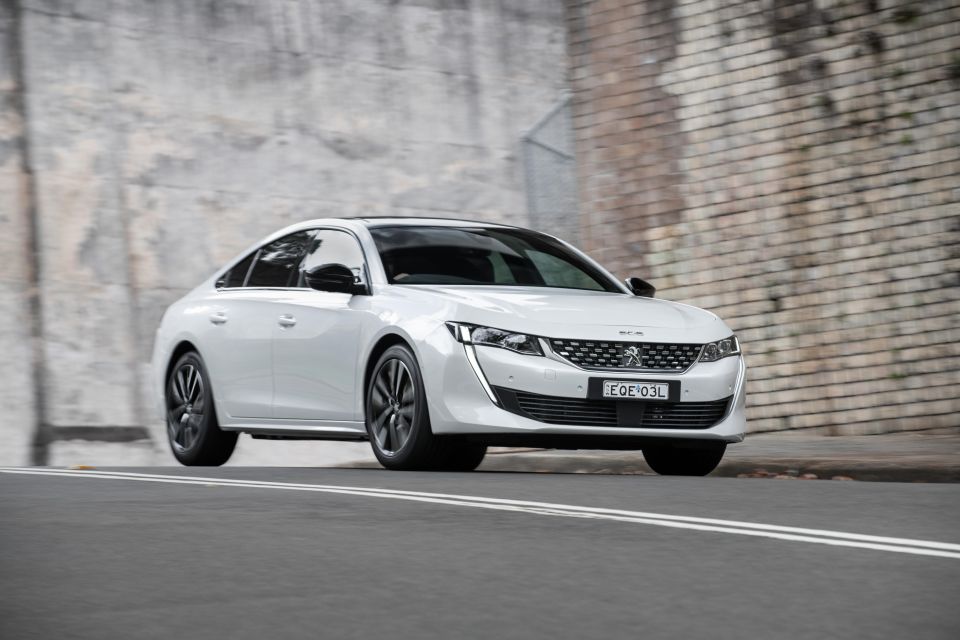
The Peugeot 508 rides beautifully thanks to its smaller 18-inch wheels and adaptive dampers.
We spent plenty of time in and around Melbourne CBD with its array of pockmarked road surfaces and tram tracks, and the 508 ironed just about everything out with aplomb.
There’s actually a wide range of options in the sense the comfort modes are soft and genuinely comfortable, whereas the Sport setting noticeably dials up the firmness and sharpens up steering and throttle response.
Column-mounted paddle shifters allow manual gear changes, but the 508’s lazy character and dual power sources mean the drivetrain can be caught snoozing similar to when you stomp the throttle. Best to leave it to its own devices.
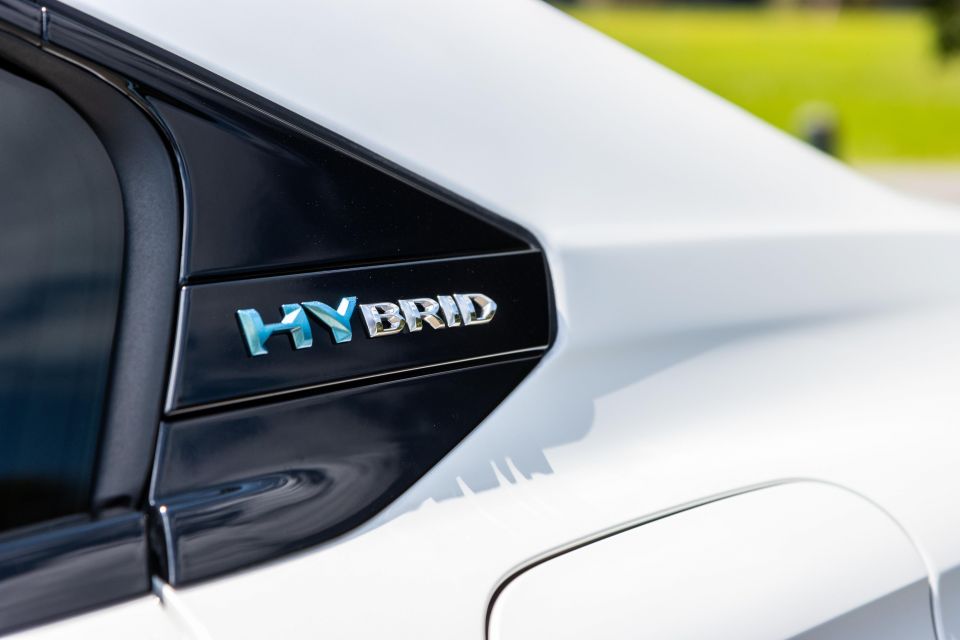
Peugeot covers its vehicles with a five-year, unlimited-kilometre warranty with five years of roadside assistance and five years of capped-price servicing.
Further, plug-in hybrid versions of the 508 and 3008 are backed by an eight-year, 160,000km battery warranty.
Scheduled maintenance is required every 12 months or 20,000km – whichever comes first. For the 508 GT Fastback PHEV, the first five visits cost $397, $711, $397, $724 and $410. This comes to a total of $2638 over 60 months or 100,000km, or an average of $527.60 per annum.
In terms of real-world fuel consumption, we saw an indicated average of 4.8L/100km over 280km of mixed driving, which is up on the 1.8L/100km claim, but not bad considering we didn’t charge every night and there were numerous highway stints where I tested out the battery charging function.
With more city driving we reckon you’d be able to comfortably achieve 50 kilometres of real-world EV driving per charge, meaning you can genuinely drive this as a pure-electric vehicle for the working week and have the backup of petrol power for extended weekend road trips.
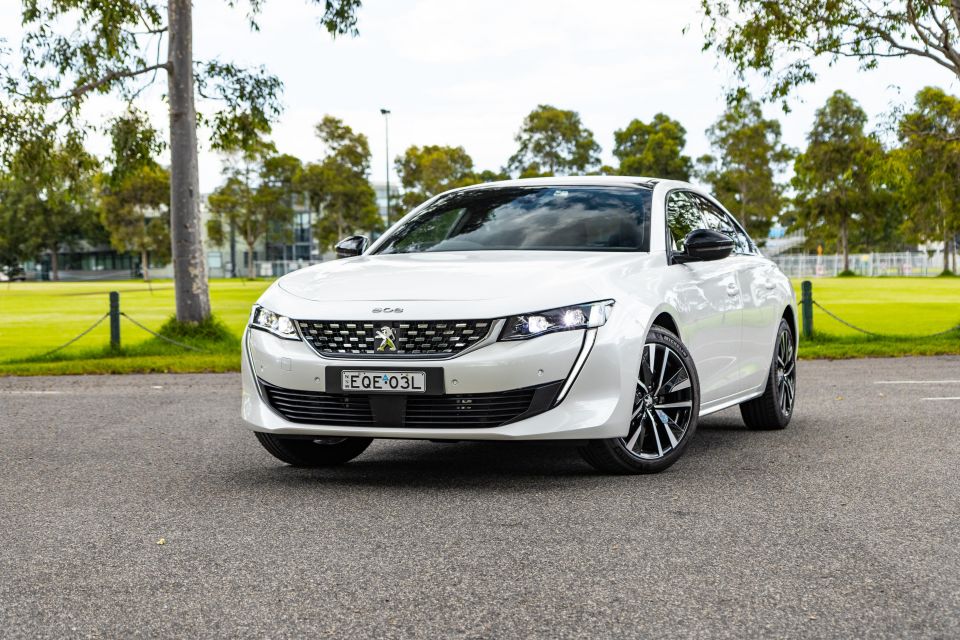
On its merits the Peugeot 508 Plug-in Hybrid is a comfortable, refined and efficient luxury sedan.
While it’s not perfect, the eye-catching looks, plush cabin appointments and daily EV driving capability are unique selling points for a vehicle with little in the way of direct competition.
There are a couple of big question marks, though. Value is a big issue – at $17,000 more than the petrol, it would take you almost a lifetime to recoup the added spend in fuel savings, even if you achieved the claimed fuel figure.
It’s also priced precariously close to premium-badged competitors, hybrid or not, which in the minds of some buyers will be enough to walk out of the Peugeot showroom and into a BMW 330e or Lexus ES300h.
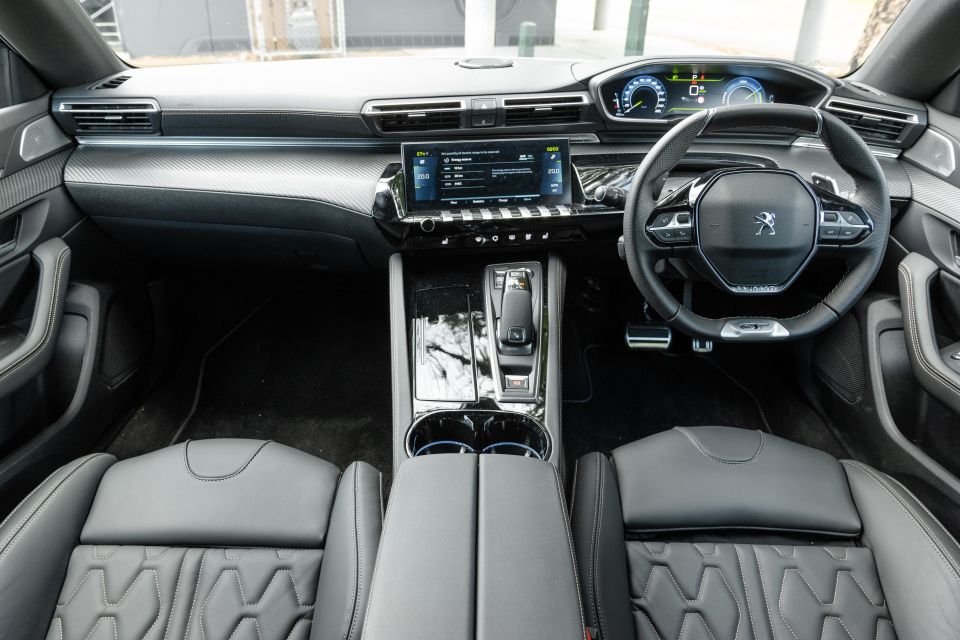
Finally, there’s the rear-seat practicality. The sloping roofline and limited headroom means it’s very compromised compared to a more convention sedan. If you have growing kids or taller adults you plan to cart around regularly, this isn’t the best car for the job.
What my time with the 508 GT Fastback PHEV showed me is just what good value the standard 508 GT Fastback is, even if initially we thought it was quite expensive compared to something like a Camry or Passat.
The plug-in hybrid only brings benefits if you charge it daily and are invested in the environmental and consumption gains rather than financial savings. If you can bear that, then this is quite an impressive vehicle.
All told, though, I really love this car. Shame about the price.

Click the images for the full gallery
MORE: Everything Peugeot 508
Take advantage of Australia's BIGGEST new car website to find a great deal on a Peugeot 508.
James is an automotive journalist based in Melbourne, Australia. Before joining CarExpert.com.au in 2020, James has worked at leading auto media outlets including Carsales and CarAdvice, as well as at Pulse agency for Ford Australia's communications team. In 2019 James made Mumbrella's 'Top 20 most prolific web authors in Australia' list after publishing 1,360 articles between March 1, 2018 and February 28, 2019 for CarAdvice. James is also an Ambassador for Drive Against Depression – an Australian charity whose mission is to support mental wellness through the freedom of driving and a shared love of cars.


Max Davies
4 Days Ago


Max Davies
4 Days Ago


Josh Nevett
4 Days Ago


Matt Campbell
3 Days Ago


Angus MacKenzie
2 Days Ago


Derek Fung
1 Day Ago